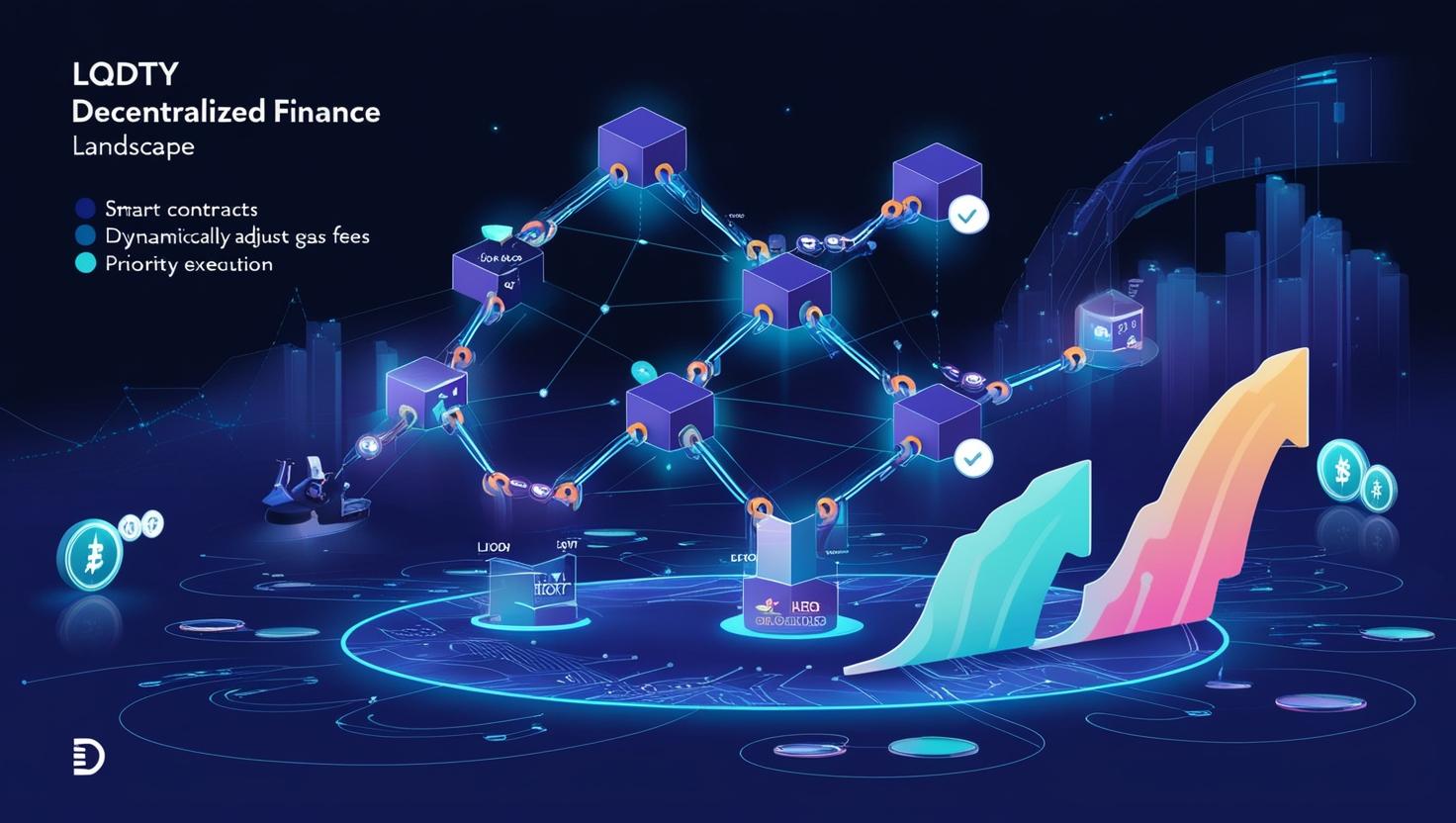What is Gas-Tiered Pricing?
Gas-Tiered Pricing is an intelligent pricing mechanism that dynamically adjusts gas fees based on transaction parameters. Instead of applying a flat gas rate to all transactions, this model assigns different gas tiers depending on the type and size of the transaction. This ensures that users pay only what is necessary for the transaction’s priority and complexity, making DeFi transactions more accessible and equitable for all participants.
How LQDTY is Solving the Gas Fee Problem
Traditional gas pricing lacks flexibility, often resulting in inefficient cost structures that penalize smaller traders and liquidity providers while not optimizing for high-frequency or bulk transactions. LQDTY’s Gas-Tiered Pricing model eliminates these inefficiencies with a structured approach that benefits all users:
1. Token Swap Transfers (ETH → LQDTY on Uniswap)
How It Works:
- Users connect their wallets and swap ETH for LQDTY via Uniswap.
- Gas fees dynamically adjust based on transaction size, ensuring fairness and efficiency.
- Small trades enjoy lower gas fees, while larger trades receive priority execution at a slightly higher cost.
Key Benefits:
✅ Small traders benefit from discounted gas fees, reducing barriers to entry.
✅ High-frequency traders and arbitrage bots optimize execution costs.
✅ Larger transactions are prioritized, ensuring minimal slippage and efficient order fulfillment.
Example:
- Swapping < 0.1 ETH → 10% gas discount, making micro-swaps more viable.
- Swapping 1-5 ETH → Standard gas fees apply.
- Swapping > 5 ETH → Higher gas fee for priority processing, ensuring rapid execution.
2. Liquidity Transfers (Adding/Removing LQDTY Liquidity)
How It Works:
- Liquidity Providers (LPs) deposit LQDTY and ETH into Uniswap pools.
- Gas-Tiered Pricing ensures cost-efficiency for both small and large deposits.
- LPs receive tiered gas pricing based on their deposit amount and network congestion levels.
Key Benefits:
✅ Retail LPs can gradually deposit liquidity at lower gas rates.
✅ Institutions and whale investors get prioritized execution for large-scale deposits.
✅ Encourages more active liquidity management by reducing gas friction for smaller adjustments.
Example:
- Depositing < $5K in liquidity → 0.004 ETH gas fee (incentivizing smaller LPs to participate).
- Depositing $5K - $100K in liquidity → Standard gas fees.
- Depositing > $100K in liquidity → 0.006 ETH gas fee (prioritized for rapid execution and stability).
3. Direct Token Transfers via Uniswap Contracts
How It Works:
- DeFi protocols, DAOs, and dApps distribute LQDTY tokens to users efficiently.
- Uniswap routing ensures the best execution price and gas efficiency.
- Gas-Tiered Pricing minimizes costs for bulk transfers and treasury operations.
Key Benefits:
✅ Cheaper bulk transfers when gas demand is low.
✅ Optimized payouts for DAOs, DeFi treasuries, and dApp developers.
✅ Encourages automation and cost-efficient token distributions.
Example:
- Transferring tokens to < 10 recipients → 15% gas discount, making small distributions more efficient.
- Transferring tokens to 10-500 recipients → Standard gas fees.
- Transferring tokens to > 500 recipients → Slightly higher fee for priority execution in bulk transfers.
Why LQDTY’s Gas-Tiered Pricing is a Game-Changer
The introduction of Gas-Tiered Pricing represents a major shift in how transaction fees are handled in DeFi. By reducing inefficiencies and optimizing cost structures, LQDTY is paving the way for more accessible and equitable decentralized finance.
Core Advantages:
✔ Lower gas fees for small traders & LPs → Drives greater adoption and participation in DeFi.
✔ Higher priority for larger transactions → Ensures liquidity efficiency and minimal slippage.
✔ Optimized bulk transfers for DeFi protocols → Enhances treasury and DAO operations.
✔ Encourages gas-aware automation → Bots, DAOs, and smart contracts execute transactions at optimal pricing.
Join the Gas Revolution with LQDTY!
LQDTY is at the forefront of innovation in DeFi, offering the most efficient and cost-effective Gas-Tiered Pricing model for token swaps, liquidity management, and bulk transactions. Whether you're a trader, a liquidity provider, or a protocol managing treasury operations, LQDTY ensures you get the best possible deal every time.
Don't let high gas fees slow you down—embrace the future of decentralized finance with LQDTY today!
